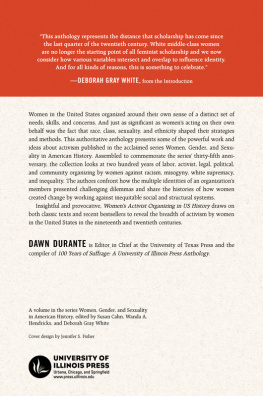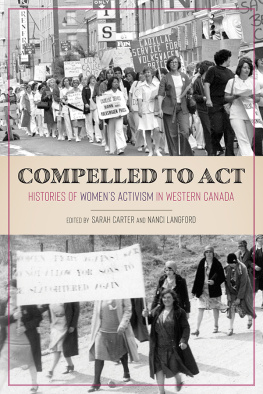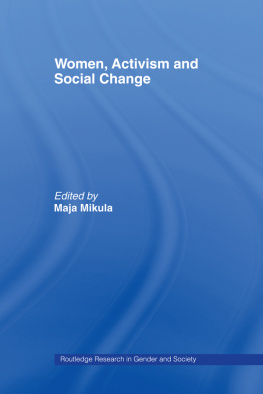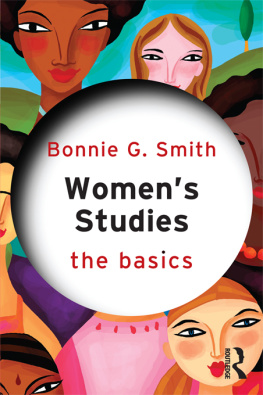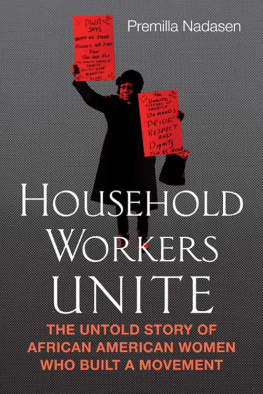Contents
From
Natural Allies: Womens Associations in American History,
by Anne Firor Scott (1992)
CHAPTER 1
TO CAST OUR MITE ON THE ALTAR OF BENEVOLENCE
Women Begin to Organize (Excerpt)
ANNE FIROR SCOTT
Benevolence: Disposition to do good, desire to promote the happiness of others, generosity, charitable feeling.
Oxford English Dictionary
In the last quarter of the eighteenth century, as the song had it, the world turned upside down. The whole complex of events and experiences encompassed in the Revolution and the formation of the Constitution created a sense of ferment, of new opportunities, but also of fear that the new experiment might fail if citizens were not up to the challenge. Women sensed new possibilities. John Adams was more prescient than he knew when he joked, in response to Abigails exhortation that he and his colleagues should remember the ladies when they wrote a new constitution, We have been told that our Struggle has loosened the bands of Government every where. That Children and Apprentices were disobedientthat schools and Colledges were grown turbulent But your Letter was the first Intimation that another Tribe more numerous and powerfull than all the rest were grown discontented.
By the 1790s, as President Washington, departing from office, was advising his fellow citizens to cherish virtue, education, and the new federal government, and Judith Sergeant Murray was announcing that young women were about to form a new era in our history, the first female benevolent societies began to appear.
While economic development had brought a rapid increase in the number of poor people, it also increased the number of business and professional men and skilled artisans who could support their families without relying on the full-time economic production of wives and daughters; such women were in the vanguard of benevolent organization. In 1800 even very prosperous families still relied on women for plenty of productive work, but as some goods once made at home began to be available in the market there was a margin of time that could be devoted to the kinds of collective enterprises hitherto the domain of men.
There were precedents. Men had created voluntary associations for many years and women had occasionally made their own experiments, though none had lasted long.
Women were also accustomed to the idea of benevolence; it meant a quality that good Christians were expected to exhibit, especially those whom God had favored with health, wealth, and standing in the community. Taking care of the less fortunate was not only a Christian duty, it might also insure one a place in heaven, and certainly enhanced the reputation of ones family. Individual women had engaged in charity as far back as the record ran; now they proposed to join together for greater effectiveness.
The women set out to provide help for people in trouble: poor people, particularly those recognized as worthy, and especially women and children. The desire to do good was a powerful motivation, but it was not the only one. From the beginning, benevolent womenstill under the influence of the challenges of the revolutionary agewere intent on their own spiritual and intellectual improvement An increasing number of women were acquiring some education and developing a desire for more. While young women would soon begin flocking to female seminaries, their mothers and married sisters tried to make benevolent societies educational institutions for themselves. Here and there a female reading circle or a literary society appearedgroups, usually of young, single women, intended entirely for self-educationbut for the most part adult women seemed to feel more at ease seeking to improve themselves in a context of carrying out significant community responsibilities. Murrays new era in female history was underway.
While development took place at different times in different places, over the first two decades of the nineteenth century most settled parts of the United States experienced rapid growth and increased interaction with the rest of the country. Voluntary associations of all kinds proliferated, to supplement the old institutional structures of family, church, and local government.
The first female societies appeared in coastal cities from Savannah to Boston, but within two decades women in towns and villages all over the country, usually led by wives and daughters of the most visible and respected families, had begun to follow suit. In the rapidly growing cities poverty was increasingly visible, but in many prosperous towns and villages it was not yet a pressing problem; something more than simple need attracted women to collective activity. Though the swift rise of the benevolent society is often described as a response to the Second Great Awakening, the impulse to organize was not limited to places where the revival spirit had struck. Many women felt, however vaguely, that in the new age now coming into being a new kind of participation in community life was expected of them.
Societies took various forms and various names. In Philadelphia there was a Female Association for the Relief of Women and Children in Reduced Circumstances; in New York one group, inclined to specificity, called itself the Female Association for the Relief of the Sick Poor, and for the Education of Such Female Children as Do Not Belong To, or Are Not Provided For, by Any Religious Society; the Female Benevolent Society of St. Thomas and the Daughters of Africa were only two of many groups of free black women; in Savannah, Boston, and Petersburg, Virginia, white women combined to establish and administer asylums for female orphans, and in Baltimore to create a charity school for girls. Mite societies, cent societies, missionary societies, mutual aid, charitable and sewing societies were all variations on the same central idea. Whatever they called themselves, their essential activities were similar. Missionary societies began by raising money to send young men to preach in foreign parts or in the West, but very shortly many of them were engaging in local charity as well. Sunday school societies set out to provide a modicum of education for laboring children, but soon found that clothing and shoes were a necessary prerequisite to learning. Charitable societies distributed Bibles and preached temperance. Some groups were affiliated with a particular church, others were ecumenical, based on neighborhoods, kinship, or class. Protestant groups were most numerous, but Catholic and Jewish women set up their own associations.
No matter where they were, who the members were, or what they called themselves, organizational forms were remarkably similar. Written constitutions were universal: every society established rules about meetings, the uses of money, and qualifications for potential recipients of charity.
Free black women in New England and Pennsylvania were among the first to organize. Their motivation was in many ways quite different from that of their white contemporaries. Limited on all sides by prejudice and poverty, they began to establish societies for mutual aid and self-education. Despite the meagerness of their resources, they undertook to help one another and those even less fortunate. In 1809, for example, when the men in the African Benevolent Society of Newport, Rhode Island, though welcoming womens labor, would not permit them to vote or hold office, the women set up a separate association. In 1818 the Colored Female Religious and Moral Society of Salem (Massachusetts) drew up a forthright constitution which could be distinguished from those of its white neighbors in Boston or Cambridge by its plain speaking and its focus on mutual aid and self-help. Article 4, for example: We promise not to ridicule or divulge the supposed or apparent infirmities of any fellow member, but to keep secret all things relating to the Society, the discovery of which might tend to do hurt to the Society or any individual. Or article 5: We resolve to be charitably watchful over each other, to advise, caution and admonish where we may judge there is occasion, and that it may be useful; and we promise not to resent, but kindly and thankfully receive such friendly advice or reproof from any one of our members.

